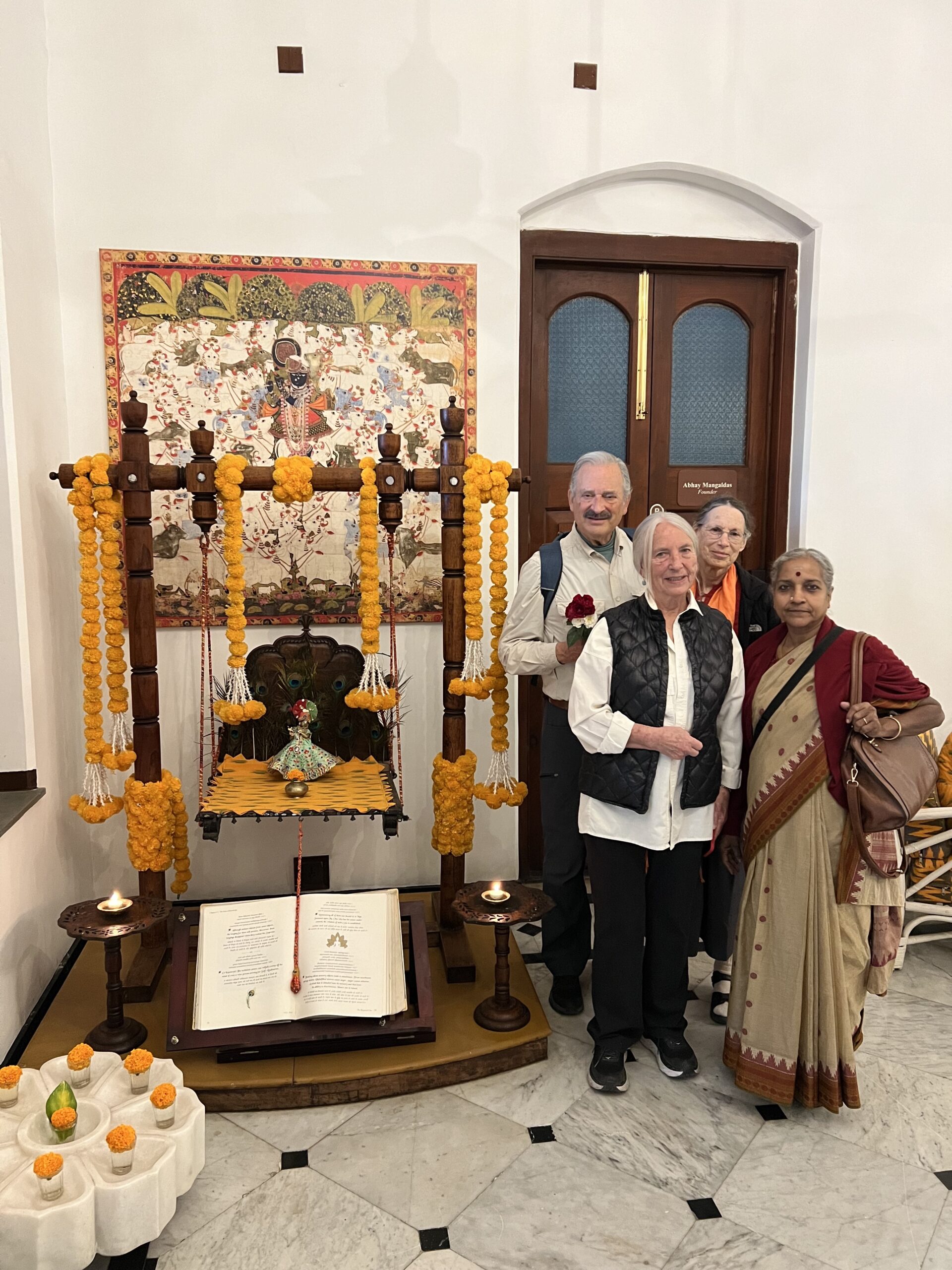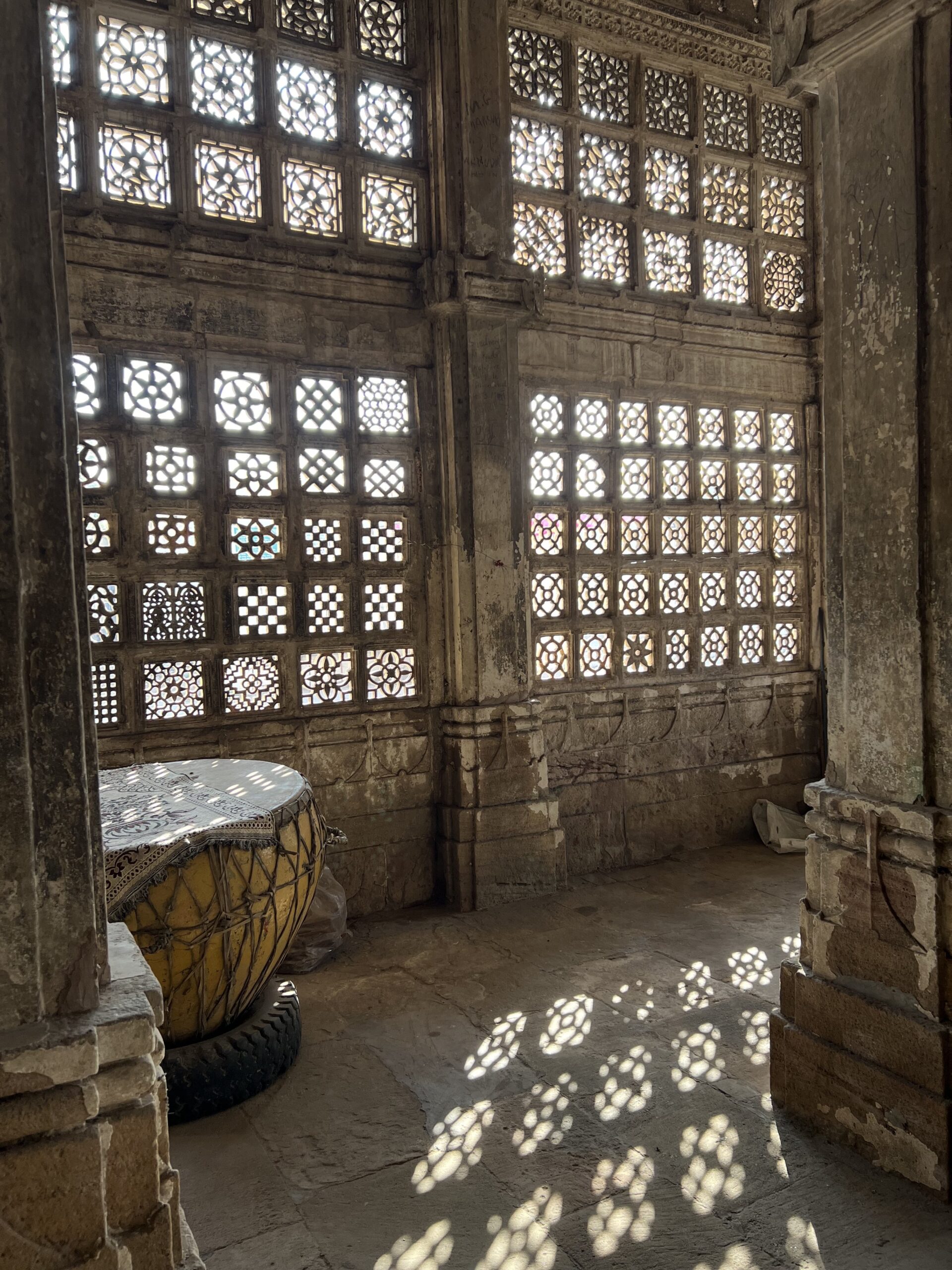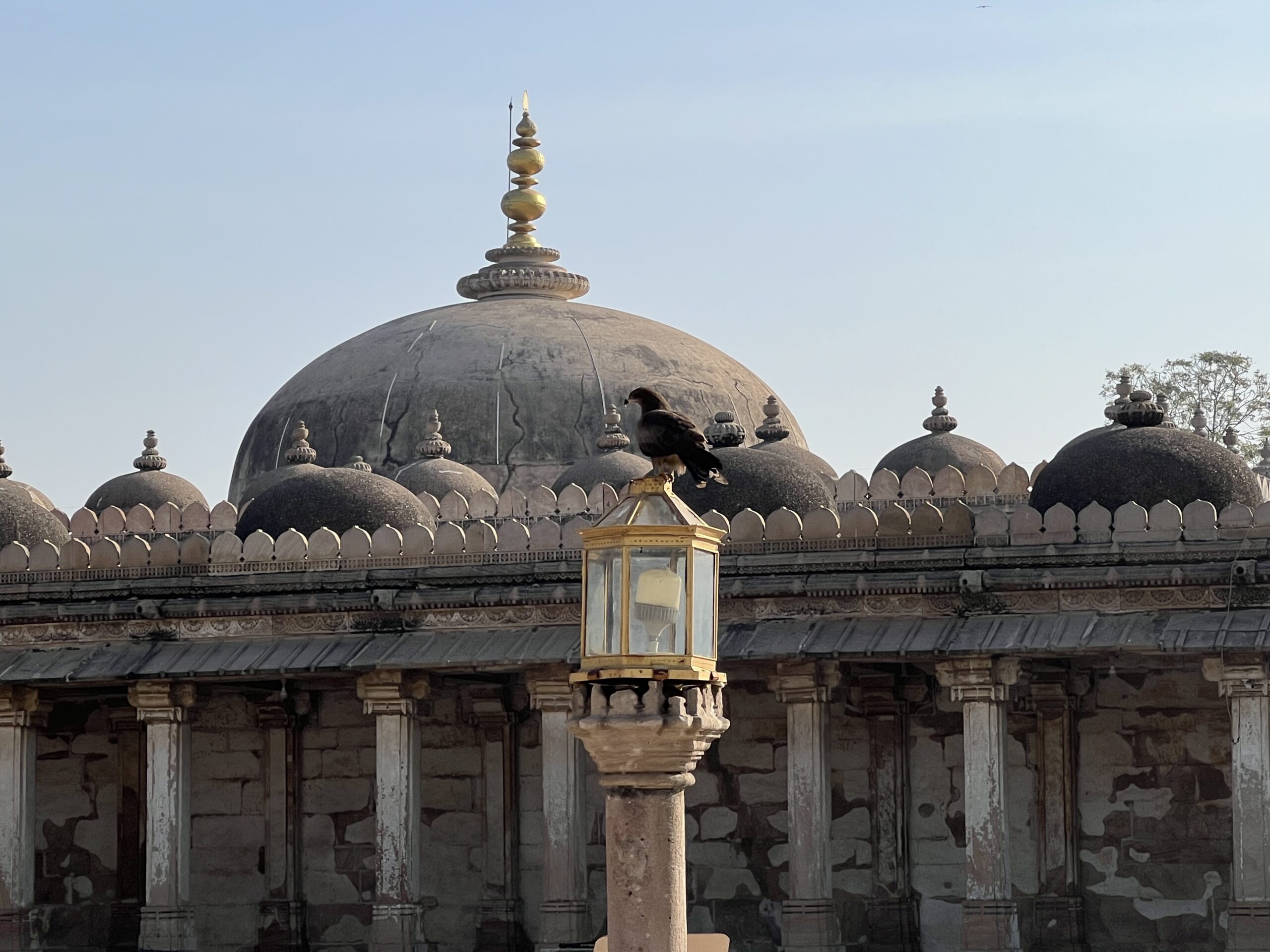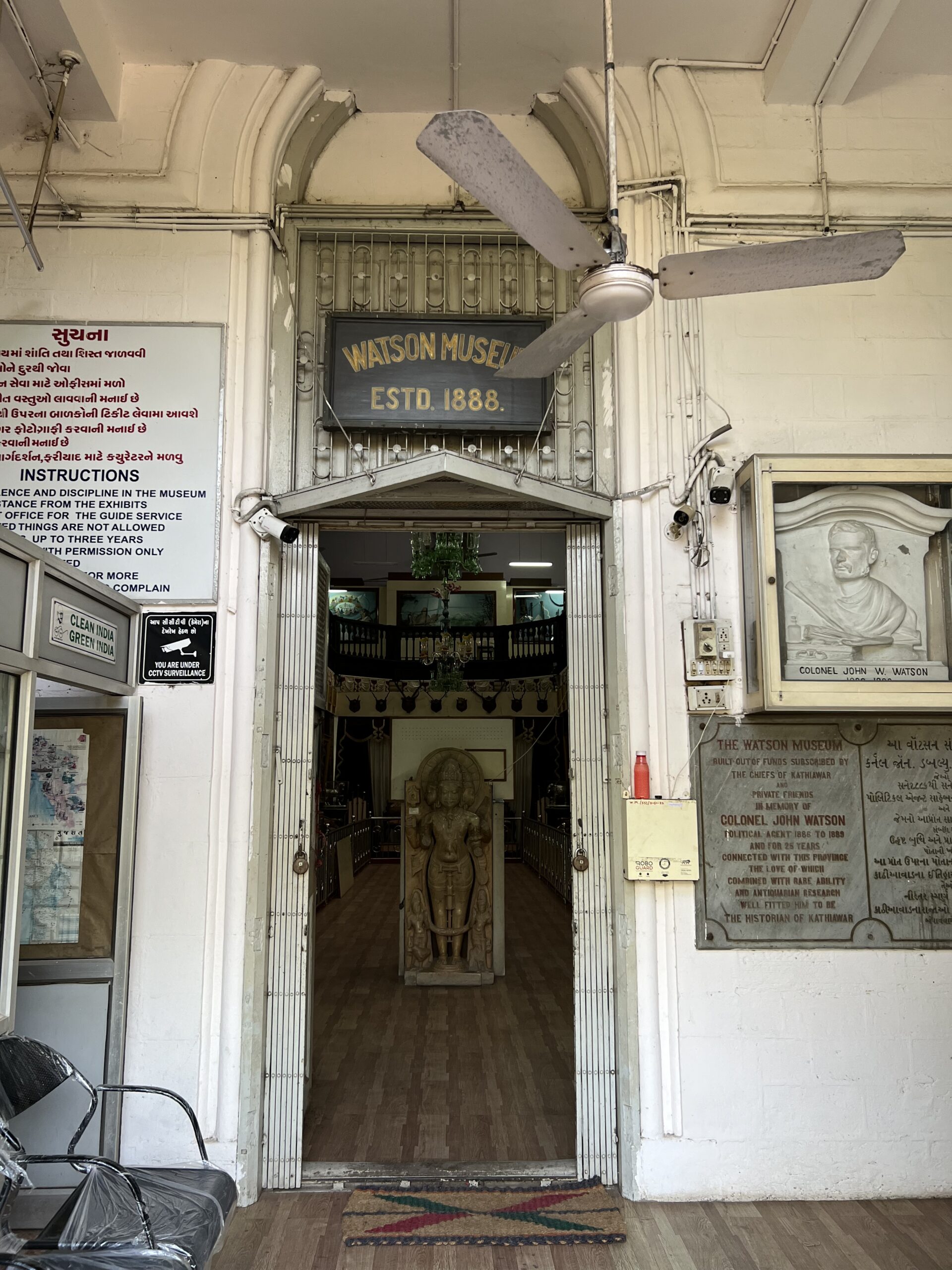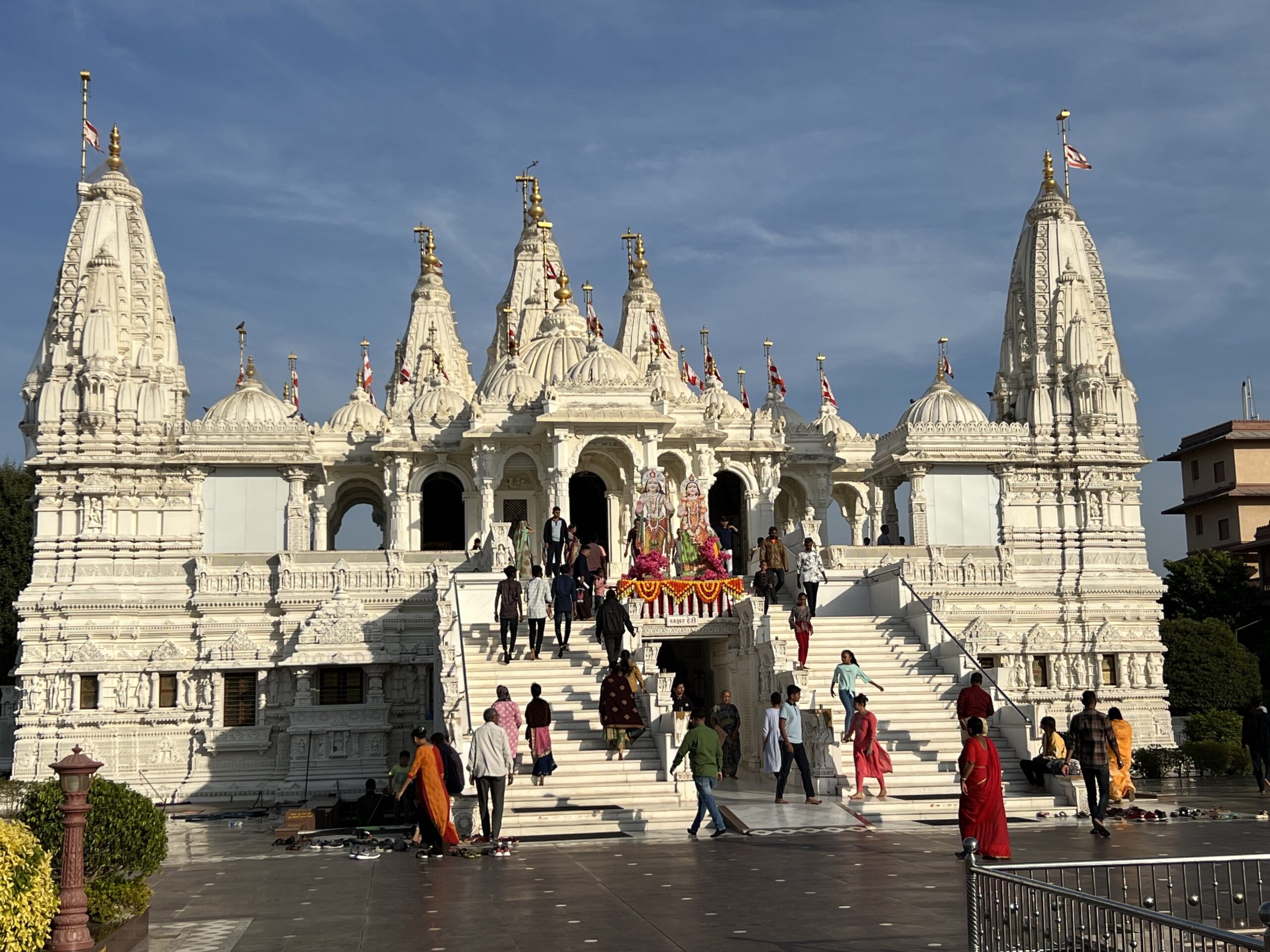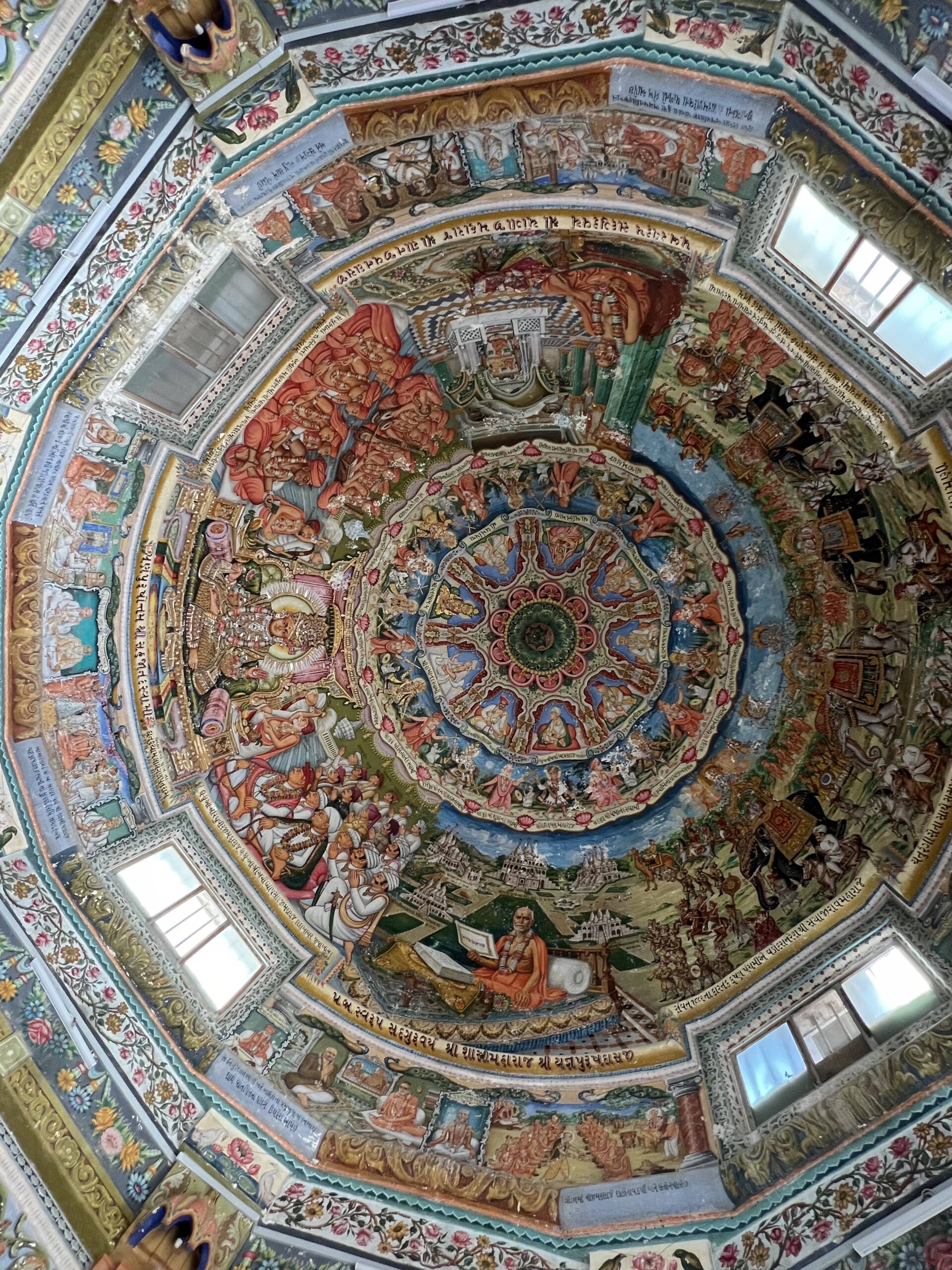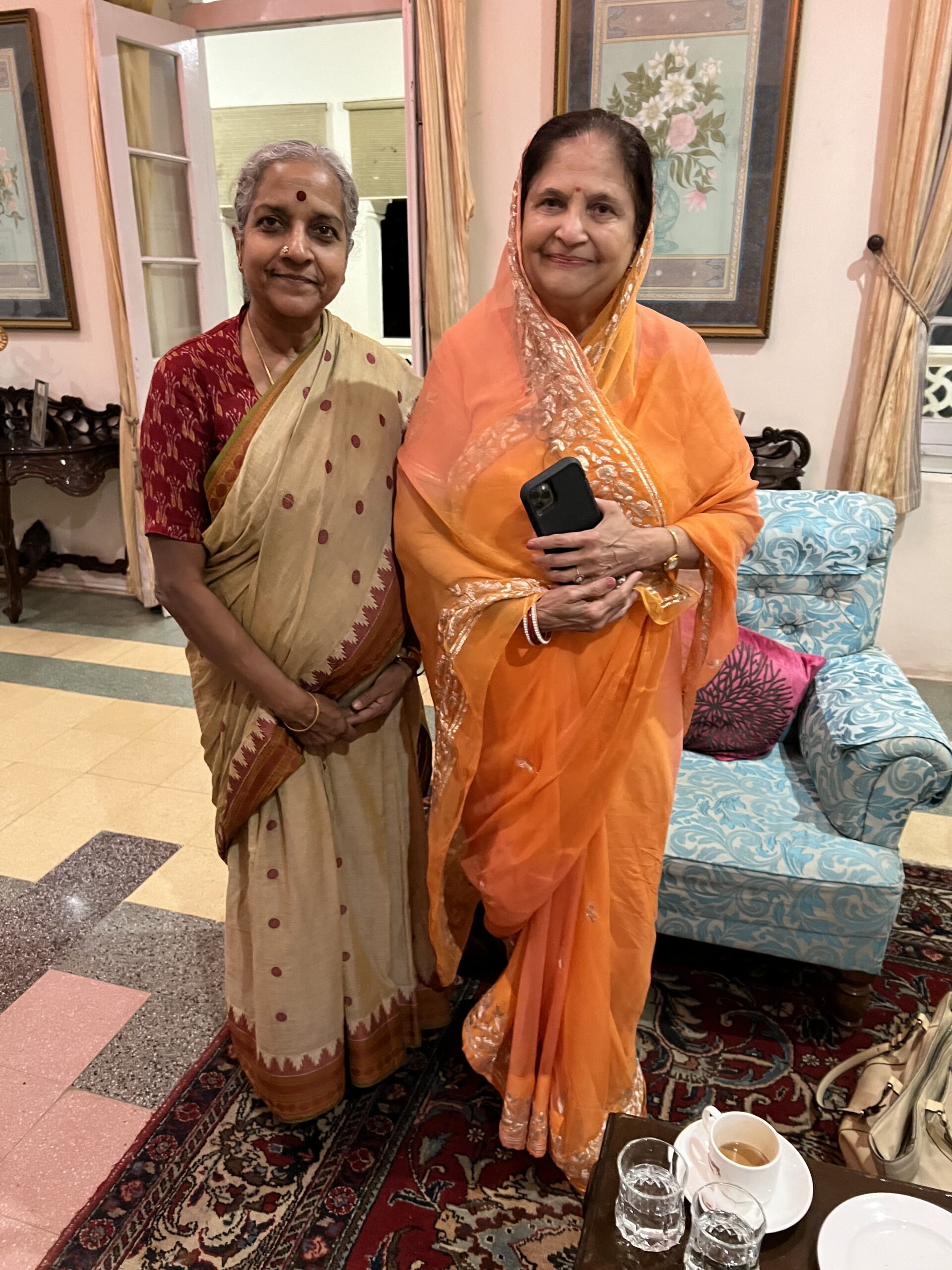It is 4:30 AM and impossible to sleep with a pack of yelping dogs in the large garden area and a little later I hear the loud blasting of a train whistle. We are in Gondal after an extraordinary day for a number of reasons.
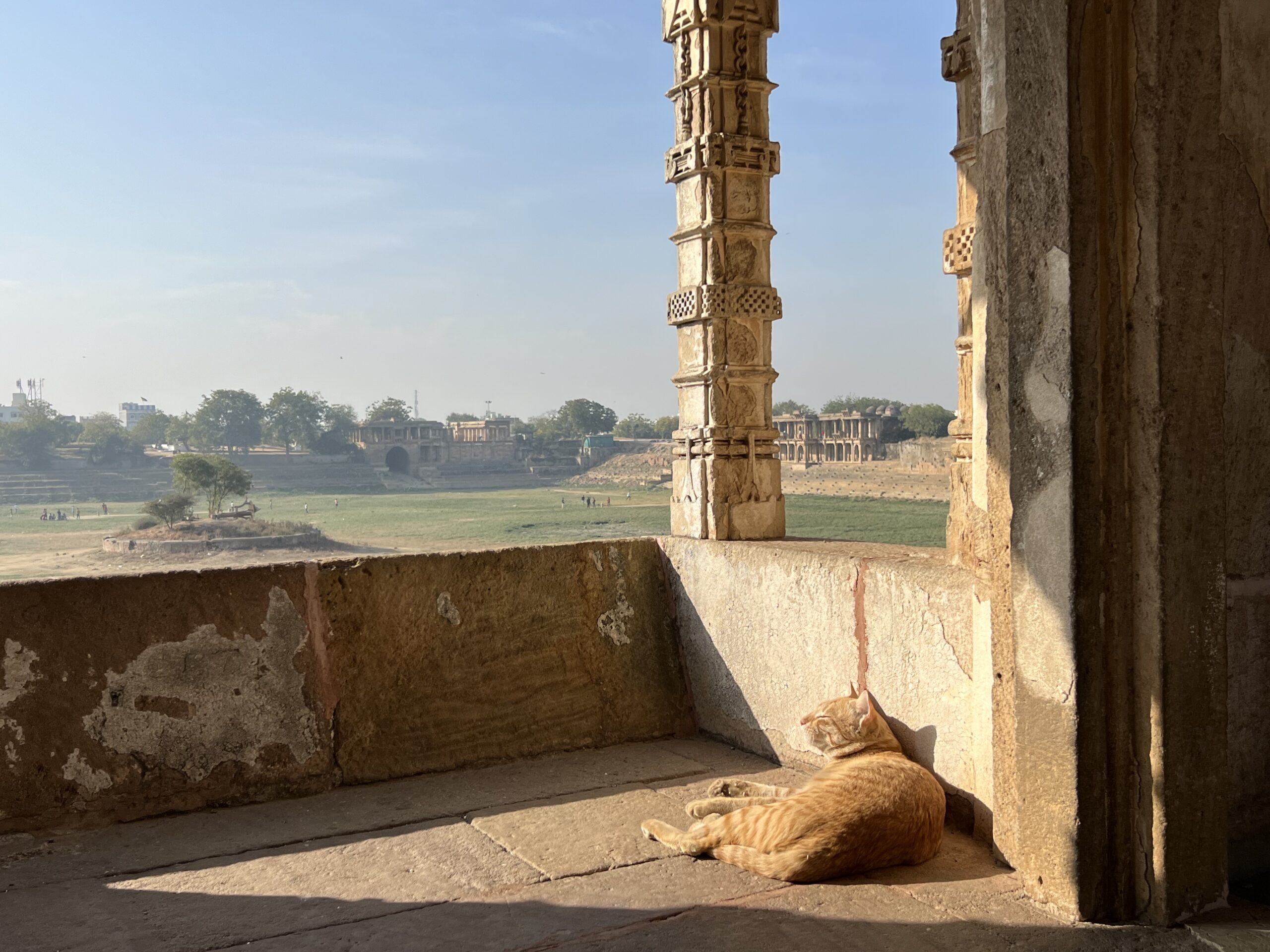
First, It was Bill’s birthday which he thoroughly enjoyed despite a slip on a set of stairs which put further stress on an already impacted knee.
Second, It was a national holiday celebrating Lord Rama’s rebirth with the consecration of the newly completed Ayodhya Temple. We watch part of the ceremony on our phones as Prime Minister Narendra Modi is full front and center following the priests instructions next to the new large statue of a black stone Rama, encrusted with golden ornaments and flowers. The local activities in the northern city of Ayodhya are reflected all over India with parades of orange flags and processions to and from temples. In Ahmedabad, we saw a cart with 2 very dressed up children scattering flower petals from their decorated perch being hand pulled through the street. Our guide reflected the common sentiment of the day: “We have been waiting 500 years for today” referring to the fact that a mosque was built on the site in the 1500’s where a Hindu temple was said to have once stood dedicated to Rama in the city accepted as his place of birth. However, it is undoubtedly not a joyful holiday for approximately 14% of the Indian population who are Muslim and whose old mosque was razed to make space for this new monument to the prevalent power of Hinduism.
This was the final result after many court cases about the rights to this holy site. I noted in one report that the Archeological Survey of India chimed in with their assessment that under the Mosque were ancient ruins of a Hindu temple. And my guess is that under those remains could be the remnants of a Buddhist shrine. The human capacity for antagonism and division seems endless.
Third, a tragedy. Our guide receives a call in the middle of the afternoon while we are together at a museum that his 62-year old father unexpectedly died. He immediately heads back to his hometown in Rajasthan and we are left in our vehicle with our driver who speaks no English. Fortunately, as perhaps fate or our dharma has dictated, Gayathri is with us and can communicate in Hindi with our driver. Our tour operator is trying to find us another guide but meanwhile we will manage on our own.
Earlier in the day we visited the Sarkhej Rosa complex outside Ahmedabad, the site of a large mosque complex from the 1500’s. Our guide relates that this was the largest mosque in India before the completion of the Jama Masjid in Delhi. It is considered of special architectural interest because it combines elements of traditional Jain, traditional Hindu, and Mughal architecture.
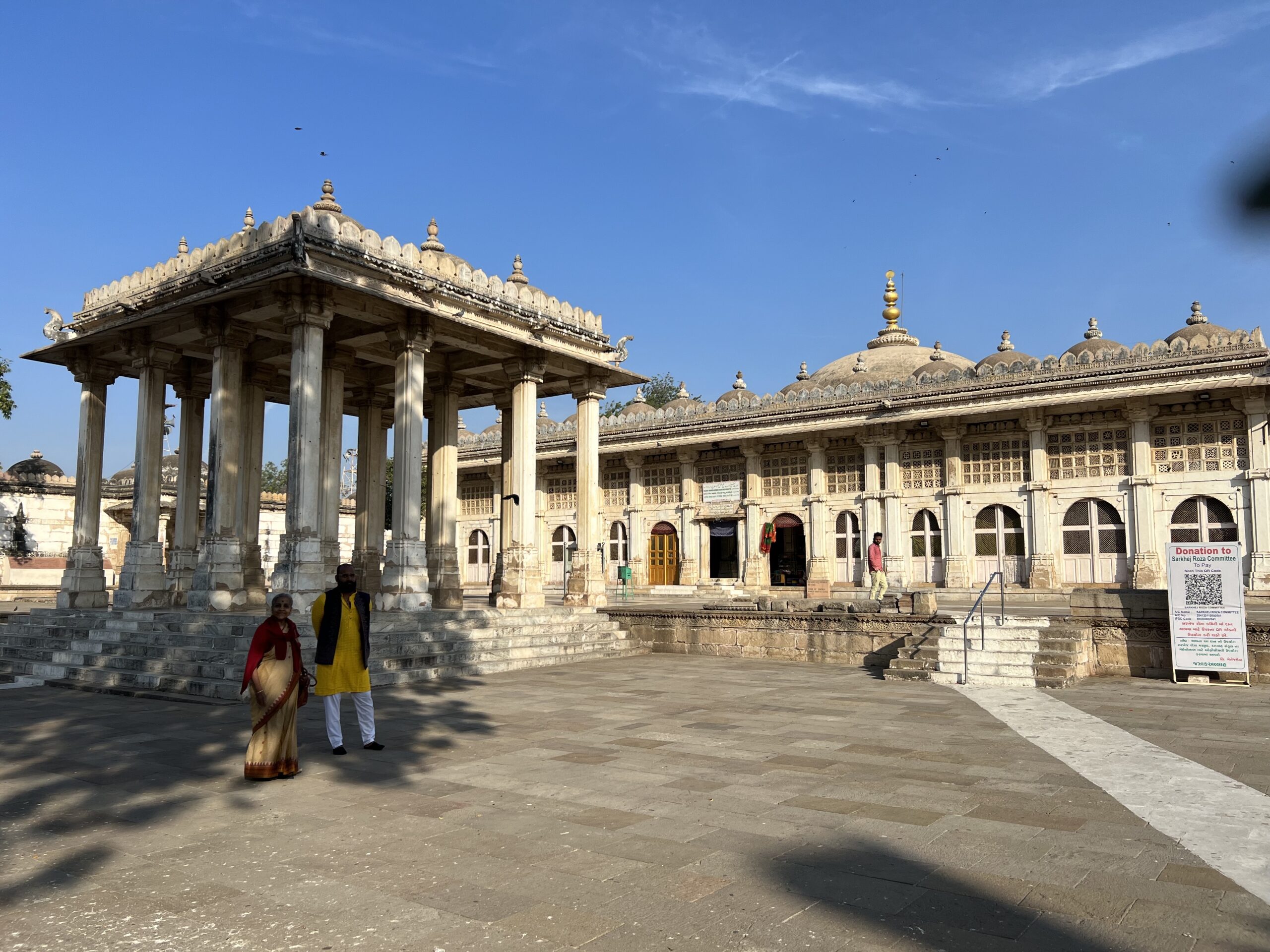
Beautiful Jali carved screen work emblematic of early Mughal construction. It contains the resting place of a great Muslim Saint who lived until the age of 111 leaving behind a thriving community. What is remarkable is both the size of the space, including a very large “tank” or lake once filled with water and now used for cricket by the local boys outside the rainy season, its state of disrepair, as if forgotten by those busy preserving other old monuments in India, and the fact that it is completely deserted while we are there. There was a very old man and woman who live in and protect the sarcophagus of the saint and who were the only only people we encountered.
On our further 5 hour drive in our large and comfortable 12-person van, we stop by the Watson Museum. This building contains the personal collection of a British officer from the 1800’s which was opened to the public in his home in 1888. Ginny and I remark that It has not been remodeled or refurbished since that time although moved and reopened in 1993 with newer signs. Old glass and wood cases and beautiful textiles mildewed and rotting in their glass tombs. Grand large oil portraits of Maharajas over time and some of the British Governors of the area. Some pre-historic rock remains and a large collection of geologic specimen reflecting the stone resources of Saurashtra. Those do not require preservation.
It is while we are at this museum that our guide receives a phone call from his weeping brother to tell him of the death of his father and we drop him off at a bus stop to get to Udaipur as quickly as possible. We stop for a lunch break where a massive wedding reception is going on and then head on the road with our driver and Gayathri in charge. Although our itinerary is to view the royal artifacts at several palaces, I had already been told that due to the coronation of the new Rajah that would not be possible on that day — although we found out later that the public was in fact invited to the palace grounds and we could have joined the festivities if we had known in advance.
Knowing we had time, Gayathri spotted a busy large white temple decked out with celebratory orange flags and we stopped and visited another Swami Narayana temple, this one 50 years old and part of a large well maintained complex. A school of uniformed boys enters and Ginny remarks how well behaved they are.
We are now in Gondal and we reach our hotel, the Orchard Palace, which was one of the rajah’s many palaces. It is filled with relics of the days of the British Raj, a stuffed tiger, zebra skin, porcelain lamps, large glass chandelier, stuffed sofas and many photographs of royalty. It is really a throwback to earlier times and reminds me of a former country home of royalty I stayed at in Simla many years ago. There are few of these relics of another way of life still around and they are more prevalent in this area where numerous small principalities existed before their inclusion, by force or coercion into the British empire.
Our tour around the grounds includes the very large orchards and garden area with, we are told, 100 peacocks, a few of which we can see strutting along. The surprise is the private train cars of the raja, sitting nearby, including a cooking car, living and dining car, and bedroom, which was used by his majesty for travel within India and was connected to the main railroad track system. We are given a few details by the well-dressed turbaned hotel guide, that this royal family is very wealthy from property and from investments. But the newly crowned head is 55 years old, enjoys managing his enterprises, is unmarried, and an only child so no heirs are in waiting. His grandfather’s and his father had a passion for cars which was transmitted to the son and on the grounds are an amazing collection of about 36 antique cars starting from the 1930’s, 1940’s and 1950’s ending with a few of todays race cars. Represented are both American Cadillacs, Fords, Chevrolets, iesMercur, Oldmobile, and a few French and German rare examples. British cars seem to be absent here although we were told there are many more cars at his other palaces.

Upon returning to the living room at the hotel, we find a group of well dressed Indians who have come for todays festivities and are resting here before returning to the palace for dinner.
There were 800 invited people, mostly royal relatives, from all over North India and abroad.
We are taken over of by a woman who now lives in Washington DC, born in 1947 and, she claims, the last of the royals before independence, born in the very small princely state of Lathi. She shows us photos of her father and grandfather, as well as videos and photos taken today of the coronation of her nephew. However we can’t quite figure out the relationship as she claims to be a first cousin to the current Maharani, who would be the mother of the new raja.
She is obviously proud to be here but only comes back every 7 years and her children less often.
A specially cooked dinner in the private dinner room and then rest. My room with Gayathri is huge with a dressing room and bathroom almost as large, filled with antique furniture and very high ceilings with fans. The night is filled with the continual sound of fireworks, both for the coronation and celebration Rama’s new home in Ayodhya. Nevertheless I fall quickly to sleep.
It is an interesting end to a day laced with unusual events.

